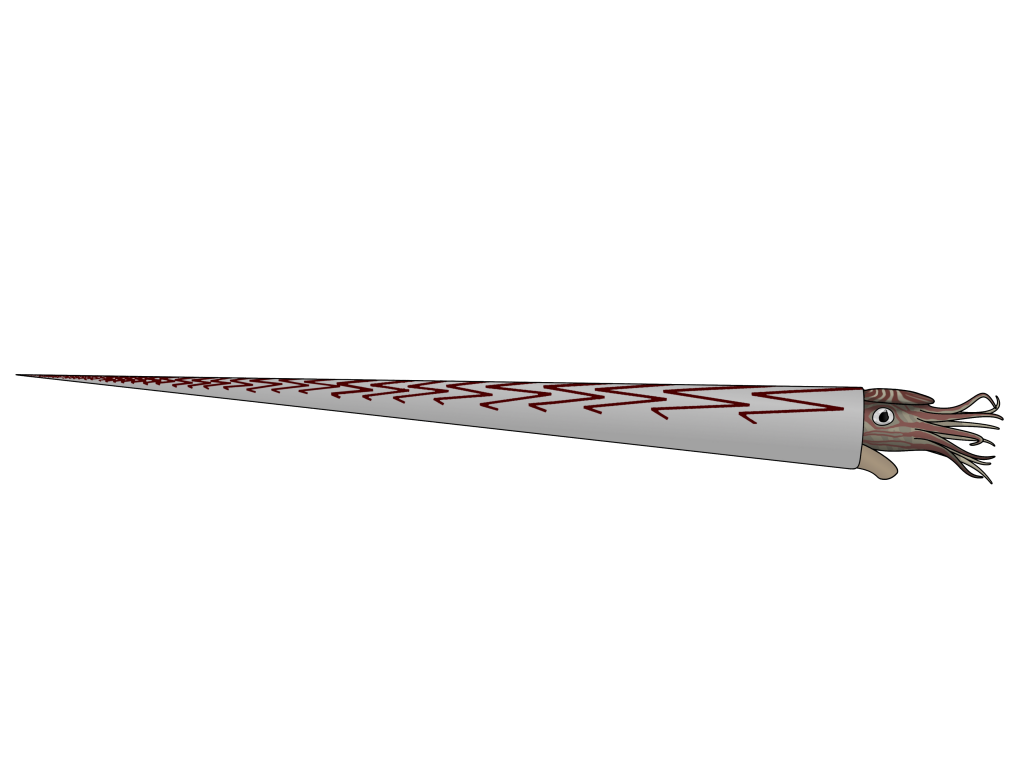
A second post, another cephalopod, though this time a fast predator capable of swimming efficiently. Michelinoceras was an orthocone, a cephalopod with a straight shell. It was extraordinarily successful, living for roughly 250 million years, and can be found all over the world. Many fossils of its close relative, Orthoceras, have been identified as Michelinoceras; we will get to that later.
The Basics
Michelinoceras had a long, straight, slender shell, with large chambers made by well spaced septa (walls). The chambers these septa created were full of gas, making the shell buoyant. The cephalopod could use a centrally placed soft tube called the siphuncle to pump liquid into these chambers and make them heavier, letting the animal sink lower in the water column. The siphuncle also over time introduced minerals into the shell, or the liquid pumped inside the chambers sometimes hardened, creating what is called “Cameral deposits”. These helped to balance the heavy last chamber, called the living chamber, which held the living animal and was especially long in Michelinoceras.
We don’t have fossils of Michelinoceras’s soft parts, but thanks to wonderfully preserved fossils of some of its relatives, we can get a pretty good picture of what it looked like. Unfortunately, not many people research before they depict these creatures and turn up with “shelled squid” or “straight nautiluses”. Michelinoceras was neither of these; it looked slightly more like a mixture of the two, but with some major differences.
First, the arm crown. Some Michelinoceras fossils have been said to show that it had elongated tentacles, like squid, but these were probably just remains of the soft body as it decomposed (3). Other reconstructions depict Michelinoceras as having more than ten arms, like extant nautiluses, or arms with suckers like a squid’s. In most likelihood, Michelinoceras had ten arms, each with a row of adhesive ridges like modern nautiluses.
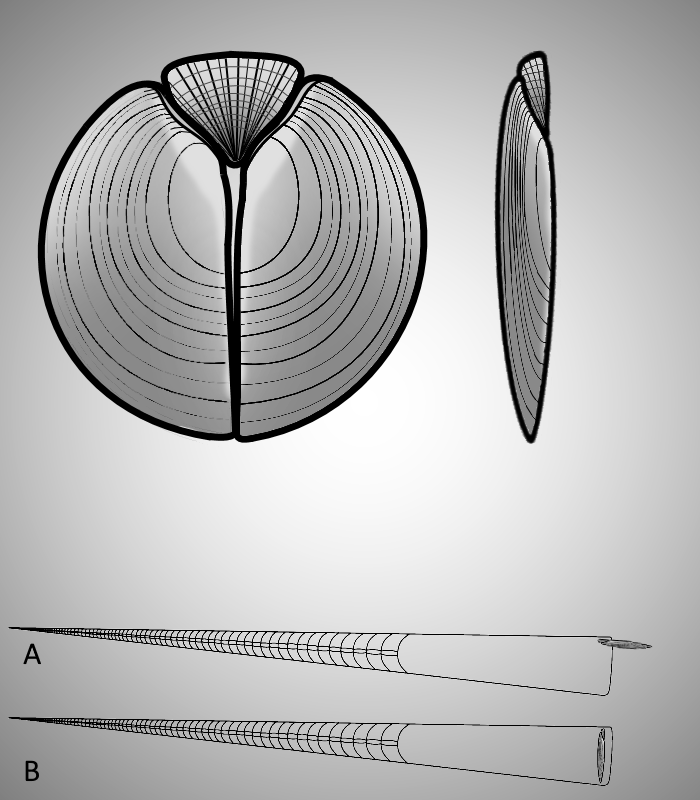
Next is the hood. Modern nautiluses have a large fleshy hood that they use as a shield to protect their soft body. They can pull their head into their shell partially, but since they have a short living chamber and large body, they can’t pull it in all the way (4). Some of Michelinoceras’s relatives have been found with three hardened plates that formed an oval-shaped shield. This kind of hood, called the aptychopsis, was just the right shape to close off the aperture of the shell. When it was carried horizontally, the third plate was inside the body chamber; it kept the other two plates rigid. Michelinoceras, with its long living chamber, could have comfortably pulled its head into its shell and closed the opening with its aptychopsis, which may have been covered in tough, leathery skin. This would have kept the Michelinoceras safe in its hard, septa-reinforced shell.
Next, the eyes. This part is tricky, because we just don’t have any eye-related fossils of ancient nautiloids. One of our best bets is phylogenetic bracketing, the path taken by Greenfield, 2020. Phylogenetic bracketing is using family trees and assuming that all animals on a certain branch of the family tree have similar traits, as they usually do. Greenfield concluded that Orthocerids would have had the pin-hole eye type, because they are on the nautilus side of the family tree.
However, the extant nautilus is nocturnal and primarily uses chemical sensing to explore its world. Pin-hole eyes are not very good at creating a clear, bright picture; if the nautilus contracts the opening to its eyes, less light will shine in, but if it makes the opening bigger, it will see a brighter, more blurry image. Since the nautilus is nocturnal, it doesn’t need to see very well, but Michelinoceras was a fast-moving predator that lived in well-lit, shallow water (though its shell was structurally strong enough to withstand 3690 feet or 1125 meters before being crushed, twice that of the modern nautilus). It would have needed to see better than its live relative, possibly having more complex eyes than modern nautiluses.
Finally, we know what color patterns Michelinoceras had! Yes, actually we do. Michelinoceras had a light colored shell with dark, black-brown zigzag bands on the dorsal (top) part. These color patterns show that Michelinoceras held its shell horizontally in life; they also show that Michelinoceras made use of countershading to camouflage its shell from predators like fish and other cephalopods (5).
Before we reconstruct, I would like to highlight that all Orthoceras found in North America or any part of the world not associated with the Baltic Sea are likely Michelinoceras; Orthoceras is a wastebasket taxon that has been cleaned up in the past 100 years, but the public still needs to catch up and it may still be a while since Orthoceras is easier to say than Michelinoceras.
Reconstruct!
Now that we have some information about Michelinoceras and its relatives, we can put it all together and get a good picture of what it looked like. We know that it had a long, tapering shell that it carried horizontally. We know that it likely had ten arms with adhesive ridges that it used to catch its prey. We know that it had a circular to oval-shaped hood trisected into three plates that it used to cover the opening of its shell when danger approached (the aptychopsis) . We know that it likely had the pin-hole eye type that modern nautiluses have, though they may have been slightly more advanced; I reconstructed them based on squid eyes that show a pin-hole ancestry. (6). We know that Michelinoceras had dark brown chevron patterns on the dorsal part of its shell. This is the reconstruction I turned out with:
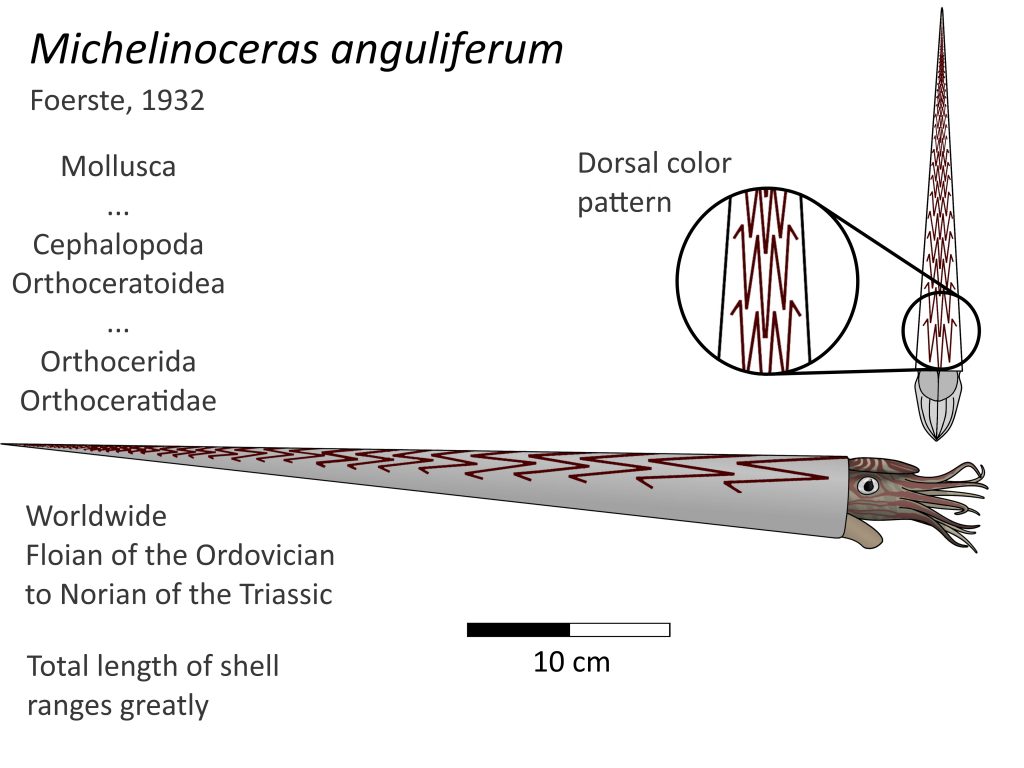
Tips for Paleoartists
| Anatomy | Traits |
|---|---|
| Shell | Long, conical shell, cylindrical. |
| Aptychopsis | Circle to oval-shaped, with only two of the three plates showing when not hiding inside the shell. |
| Eye | Possibly pin-hole, but allowing for better vision than modern nautiluses. |
| Arm crown | Ten arms of equal length, with adhesive ridges instead of suckers. |
| Color pattern | Black-brown chevron patterns, the size of and distance from each other depending on the subspecies. |
Recent updates!
This post was edited 2/5/22 for accuracy, but that’s not the only reason! I have been doing some more reconstructions, this time internal anatomy! Reconstructions based on recent nautilus, ammonoids, squid, and octopuses, but nautilus whenever possible. The brain may be to large, but this shows how living Michelinoceras may have functioned.

Sources
Michelinoceras:
https://paleobiodb.org/classic/checkTaxonInfo?taxon_no=12542&is_real_user=1
https://trenton.mcz.harvard.edu/cephalopoda
https://www.app.pan.pl/archive/published/app54/app20070064.pdf
Orthocerida and Endocerida:
https://incertaesedisblog.wordpress.com/2020/02/16/reconstructing-fossil-cephalopods-endoceras/
https://www.researchgate.net/publication/326025094_Cameral_deposits_in_Paleozoic_cephalopods
Nautilus:
https://palaeo-electronica.org/1998_1/monks/text.pdf
https://tonmo.com/articles/nautiloids-the-first-cephalopods.36/
https://www.earthlife.net/inverts/nautilus-anatomy.html
Squid embryology:

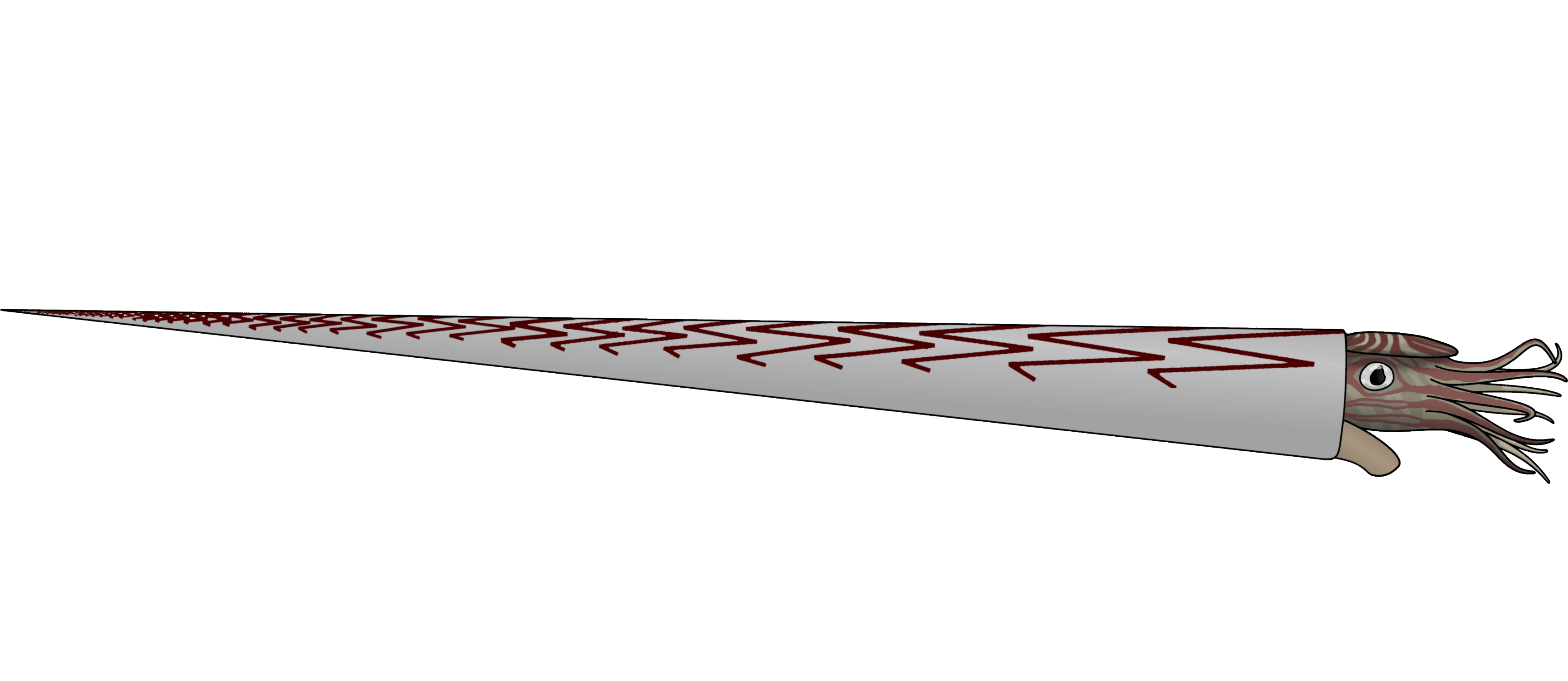
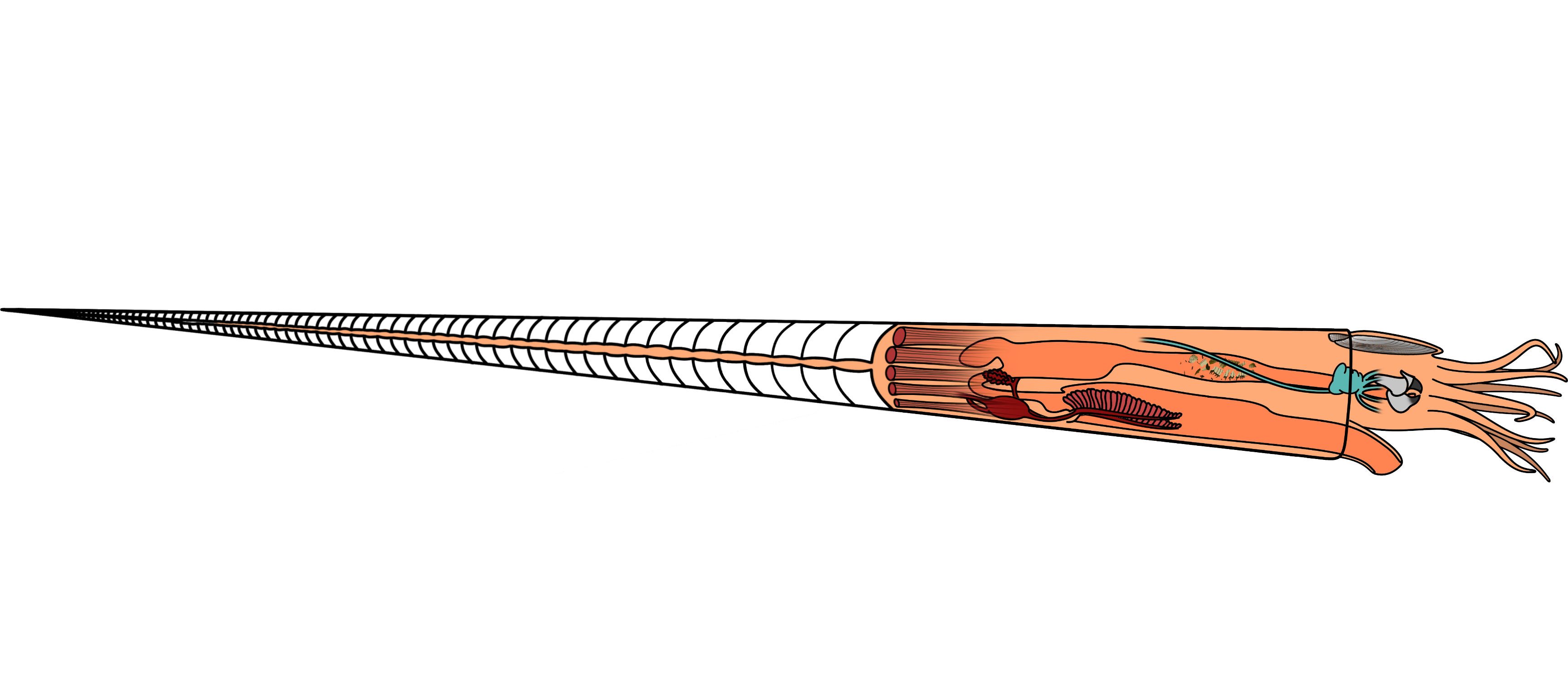
The artwork is great!
Also the information! 🙂